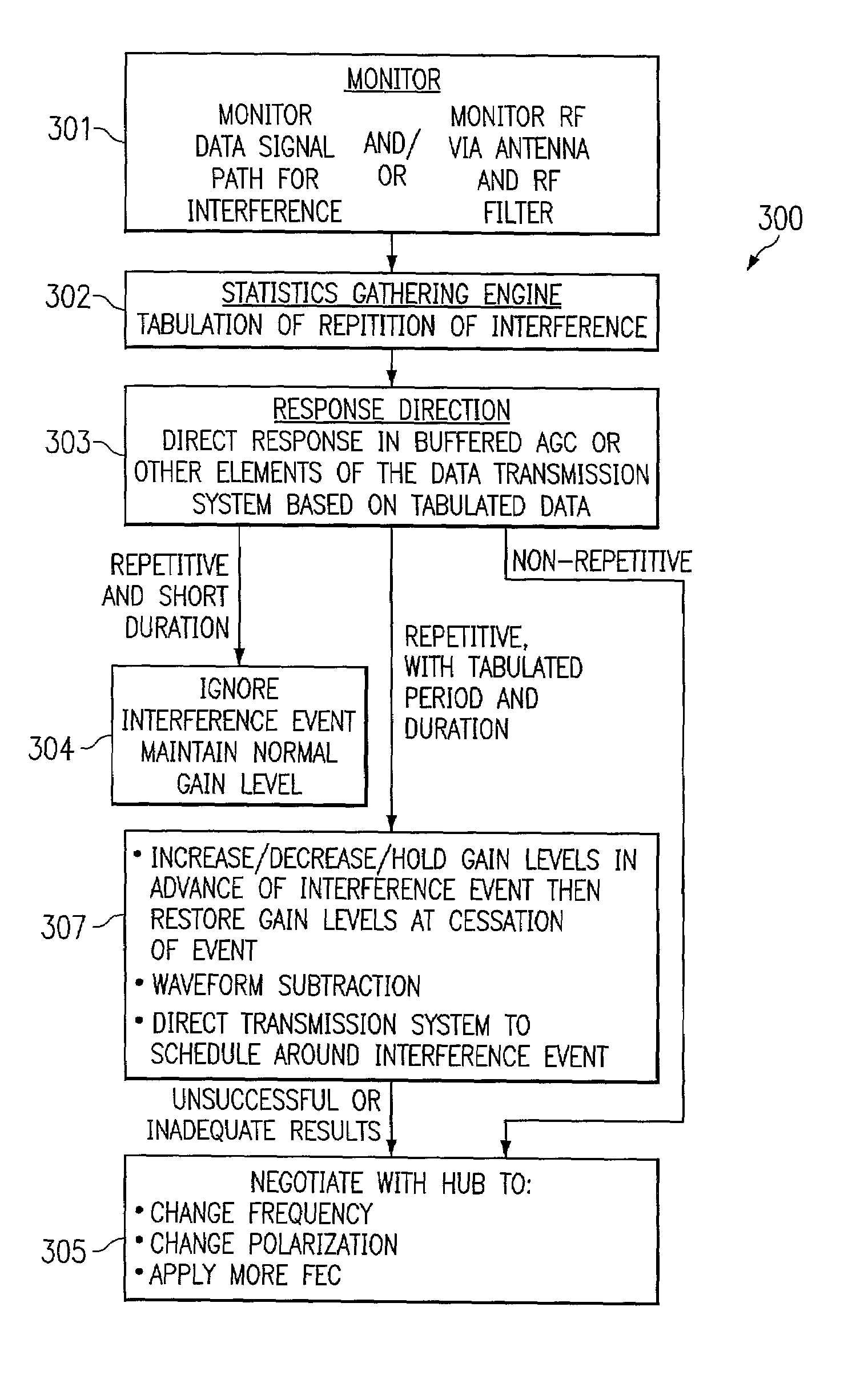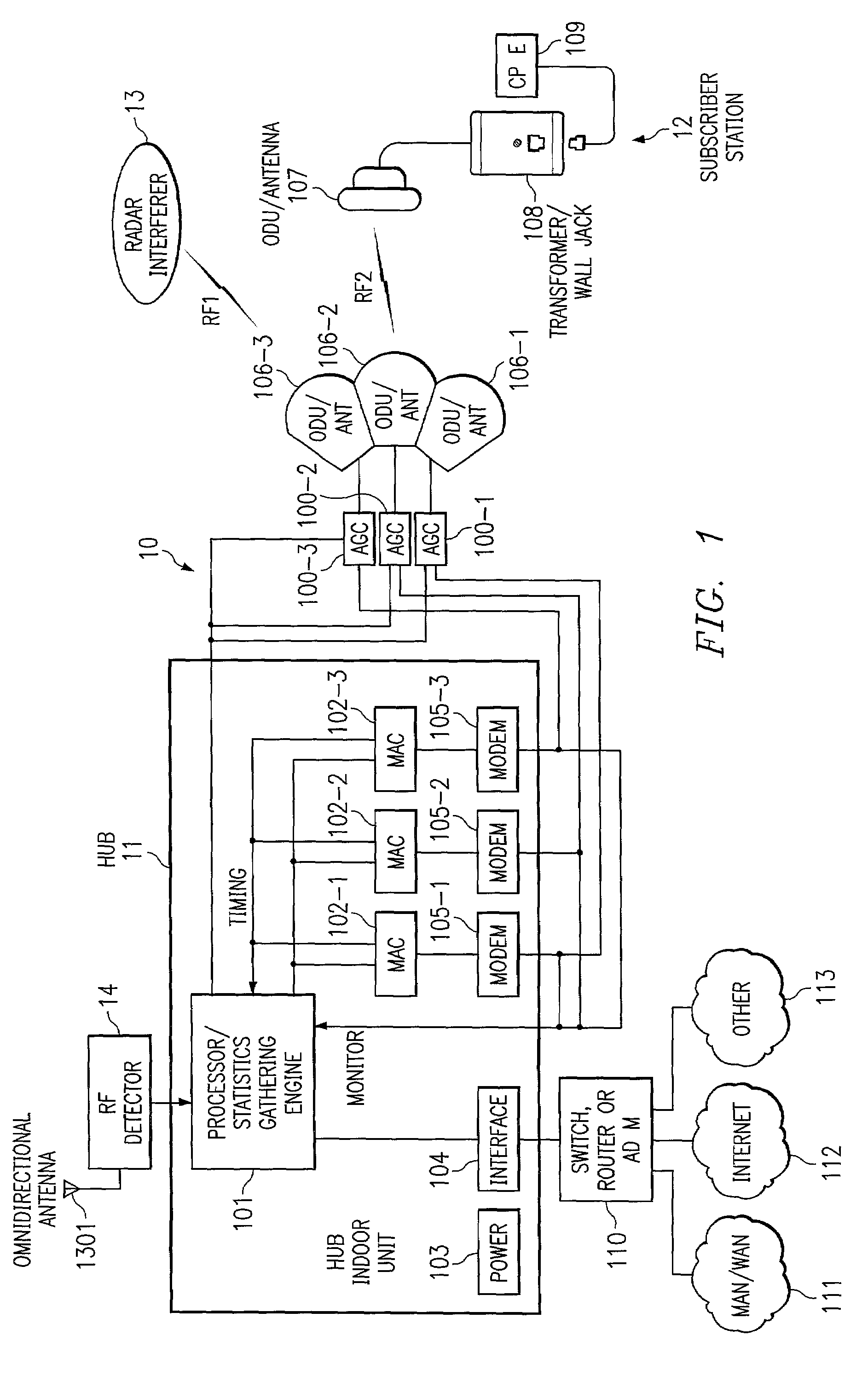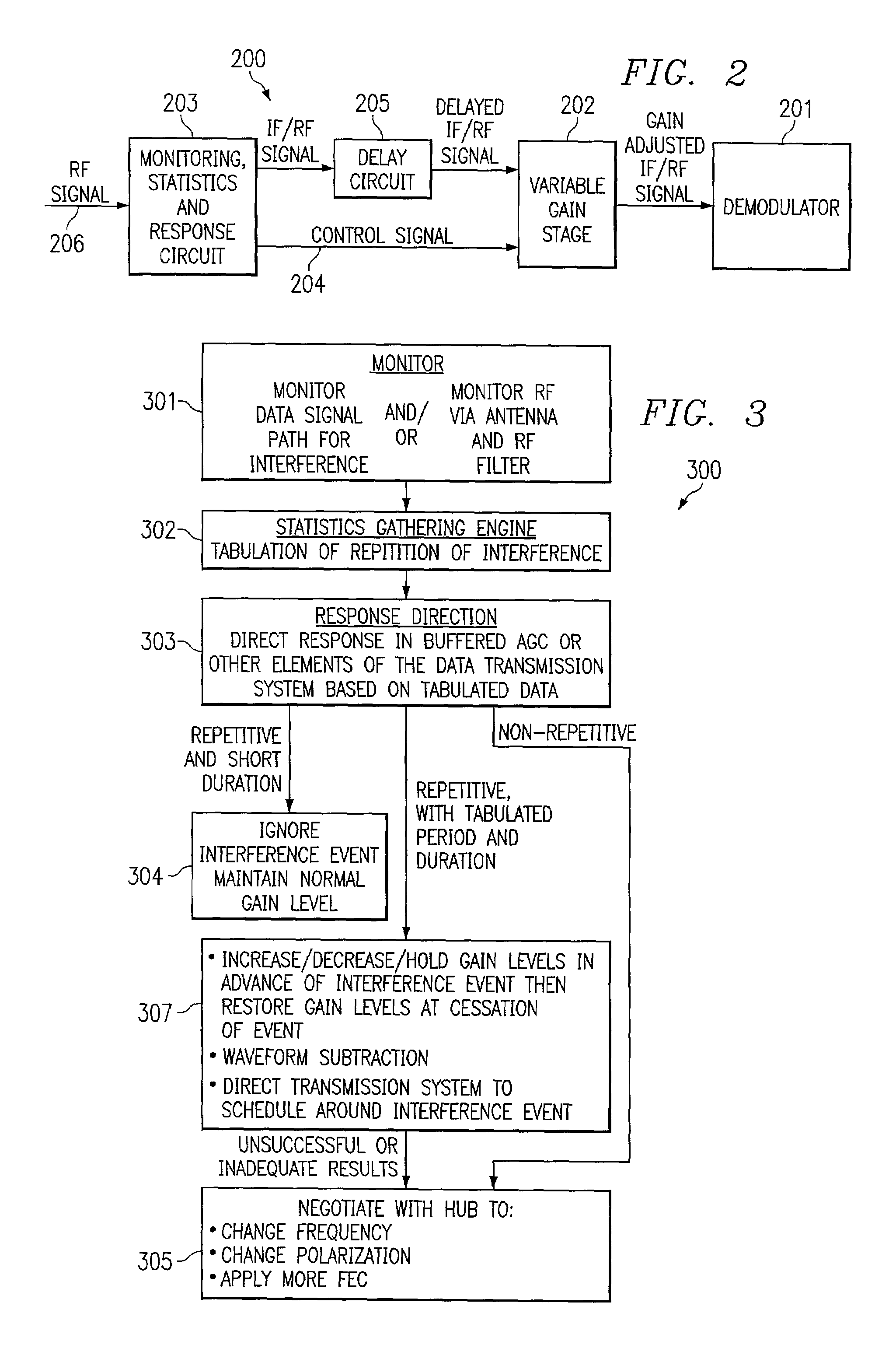System and method for statistically directing automatic gain control
a technology of automatic gain control and statistical directing, applied in the field of communication interference detection and mitigation systems, can solve the problems of inability to act upon the impulse of the agc, the prior art system is undesirable, and the limit of the prior art ag
- Summary
- Abstract
- Description
- Claims
- Application Information
AI Technical Summary
Benefits of technology
Problems solved by technology
Method used
Image
Examples
Embodiment Construction
[0022]The present invention is used to detect interference and mitigate its effect on data transmission in unlicensed RF bands employing a method and system for a statistically directed automatic gain control 100 (AGC). Turning to FIG. 1, data transmission system 10 has hub 11 (which could be one of many) and subscriber station (SS) 12, again one of many. Hub 11 would be connected in a typical installation to other remotely located subscribers or users (not shown) via one or more networks, such as MAN / WAN 111, Internet 112, or any other network, such as network 113, all via switch router and / or add drop multiplexer ADM 110 and interface 104. These networks could be internal to an enterprise or could be connected to public or private networks either directly or via an intermediary network. Power for the hub 11 is provided via power supply 103.
[0023]Hub 11 serves to direct communications between subscriber station 12 and other users over RF link RF2 between one or more hub antennas 10...
PUM
 Login to View More
Login to View More Abstract
Description
Claims
Application Information
 Login to View More
Login to View More - R&D
- Intellectual Property
- Life Sciences
- Materials
- Tech Scout
- Unparalleled Data Quality
- Higher Quality Content
- 60% Fewer Hallucinations
Browse by: Latest US Patents, China's latest patents, Technical Efficacy Thesaurus, Application Domain, Technology Topic, Popular Technical Reports.
© 2025 PatSnap. All rights reserved.Legal|Privacy policy|Modern Slavery Act Transparency Statement|Sitemap|About US| Contact US: help@patsnap.com



